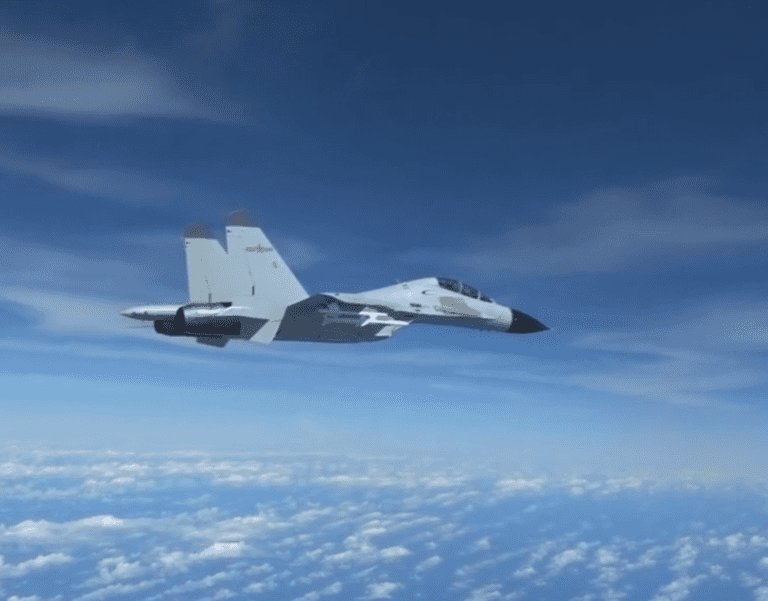
A Chinese fighter jet suddenly began shadowing a U.S. patrol plane over the South China Sea on Friday, an example of encounters that officials say are now a near-daily occurrence and becoming more dangerous.
A Wall Street Journal reporter wrote that while they were flying on a U.S. Navy P-8 patrol plane surveilling the sea on Friday, a Chinese J-11 fighter armed with four missiles suddenly appeared behind them, flew over the P-8, and settled a few hundred feet from its wing.
A Chinese military ground station radioed the P-8 with a warning: “American aircraft, this is the PLA air force. You are approaching Chinese airspace. Keep a safe distance or you will be intercepted.”
After U.S. forces replied that they were flying in international airspace, the ground station reportedly said, “No approaching any more or you will pay full responsibility.”
The commander of Navy surveillance aircraft in the region, Capt. Will Toraason, said “the long-term trend is more and more aggression” by Chinese fighter pilots over the South China Sea. In December, a Chinese fighter was filmed coming within 20 feet of a U.S. spy plane, causing the American crew to take evasive action.
The South China Sea is a critically important region for China, which trades nearly 40 percent of all its goods through the waterway, according to ChinaPower. Control of the sea is hotly disputed, with five countries having built more than 90 outposts on contested reefs and small islands, according to the Asia Maritime Transparency Initiative (AMTI).
U.S. aircraft fly over the sea nearly every day to chip away at China’s authority over it and to monitor the militarization of Chinese-built artificial islands, the Journal reported. The P-8 crew on Friday was using cameras, radar, and other sensors to examine the ships, aircraft, and facilities on the islands.
The Chinese jet shadowed the P-8 for about an hour, continuing to follow it as it flew back across the South China Sea. It pulled away as the Navy plane left the area of the Paracel Islands, where China has 20 outposts, according to AMTI.
As China has become increasingly assertive in the region, the U.S. has declared a mission to “maintain the unimpeded flow of commerce and oppose any attempt to use coercion or force to settle disputes.” Last summer, Secretary of State Antony Blinken urged China to end its “provocative behavior” and said the U.S. would defend the Philippines against attack in the region.
This was a breaking news story. The details were periodically updated as more information became available.
0 comments :
Post a Comment